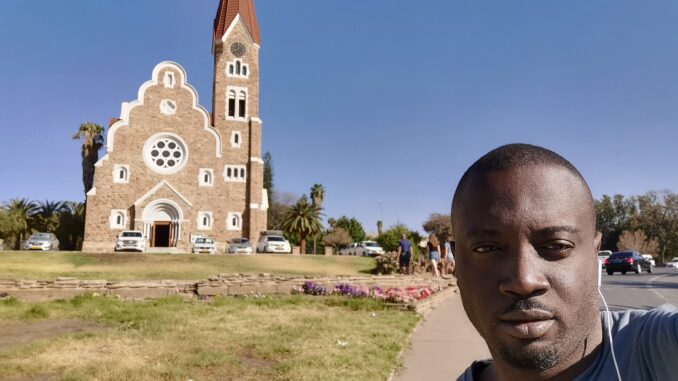
Ernest and myself completed the immigration formalities at the Buitepos border in a very short time and then crossed into Namibia. Thanks to the fact we arrived there very late in the evening and the immigration officers too were tired to ask me lots of questions as they would normally do.
We continued on our journey to Windhoek. I had met Ernest the previous day at Kang. He was driving to Walvis Bay Port in Namibia to receive a consignment of cars and to move them back to Gaborone the capital city of Botswana.
He had agreed to give me a ride to Windhoek since it was on his route. We left the border and continued the trip on the Trans Kalahari Corridor till we arrived an important town called Gobabis.
Gobabis is a city in the south-eastern Omaheke Region and also serves as the regional capital. About two hours from the Buitepos border post with Botswana. Gobabis is in the heart of the cattle farming area in Namibia. We made a stop in this town to buy a SIM card for myself and a few refreshments. I still remember I did not have a smaller P20 note to pay for the SIM card. Ernest cheerfully paid this for me.
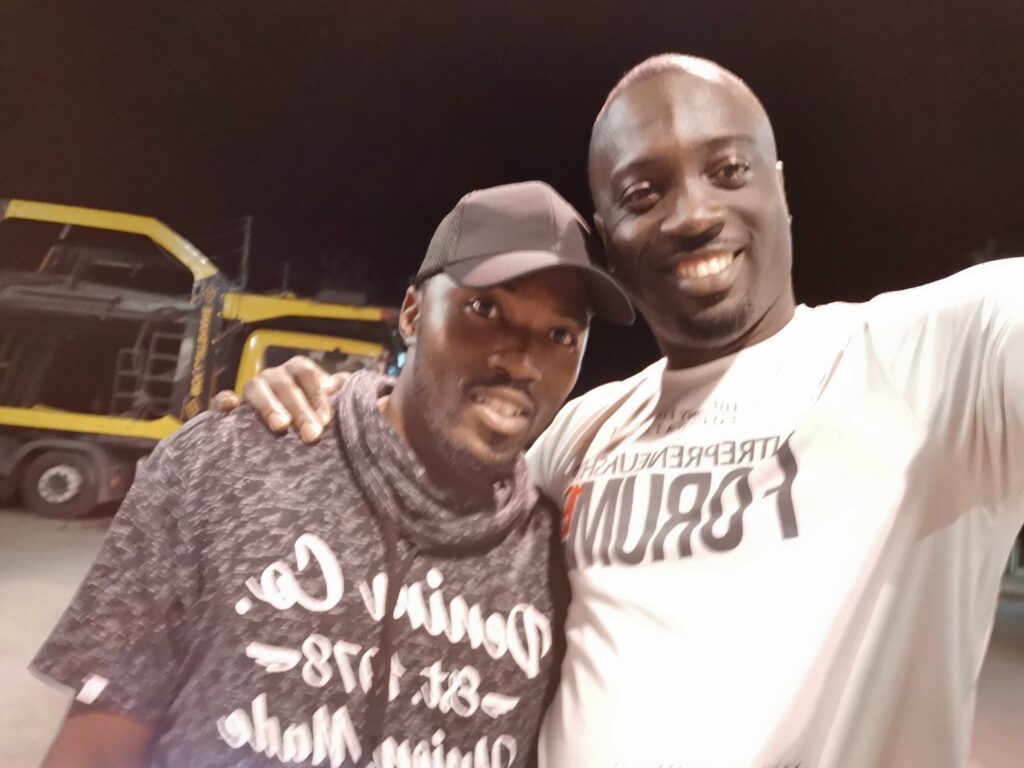
Another thing I observed here in Gobabis is that things are cheaper in Namibia compared to Botswana – largely because Botswana is landlocked and most of the goods are imported into the country from nearby countries. I also noticed this same trend in Cape Verde where things were very expensive just because most of the things used here are imported.
Leaving Gobobis, the onward journey to Windhoek from this point became quite interesting. We saw different wild animals and one must have to drive carefully in order not to run into them. There were antelopes, monkeys, lions and several other animals.
Ernest told me it is easy to spot a lion at night because the eyes reflect light. I made some research into this and found out that the lion’s eyes shine in the night because they have a special type of reflective layer behind the pupil of their eyes known as Tapetum Lucidum which enhances the amount of light absorbed by the photoreceptors in their eyes. This phenomenon is an advantage to the animals and helps it to see things easily in the dark. It is believed this makes the lion’s eyesight eight times better than that of a human. This feature also happens in dogs, cats and several other animals.
Hitting any of these wild animals in an accident could cause a truck to somersault. We applied all forms of tricks and hacks to ensure we did not sleep: chewing gums, playing loud music and talking out loud to each other.
At around 4am that morning, on our arrival to the Hosea International Airport in Windhoek, we decided it was time take a little nap due to the fact that fatigued Ernest still has a long distance to drive to Walvis Bay Port in the Atlantic shores of Namibia. We were soon awake and continued the journey at around 6am.
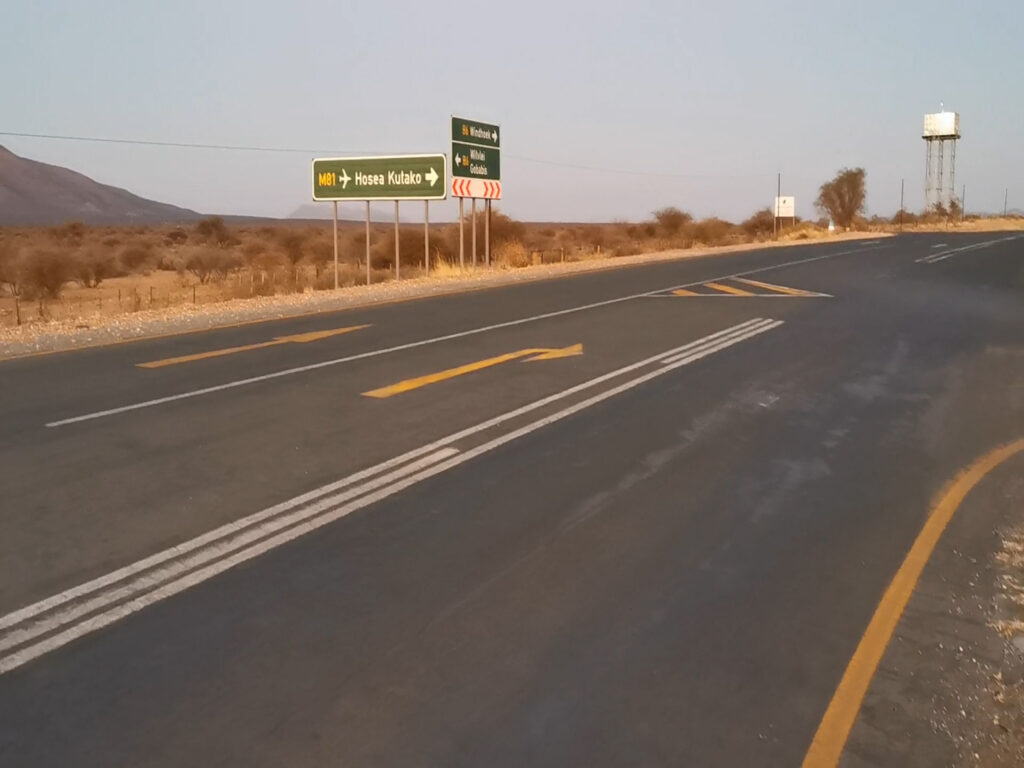
My voyage was supposed to terminate at this point but due to the fact it was still early and dark, there were no vehicles at sight going into town, Ernest advised me it was too risky to stand and wait for a vehicle going to town.
Considering the dangers of being robbed and having to sit out for a long time without getting a vehicle, I decided there was no need stopping at the Windhoek anymore – after all my visa was valid for 3 months and guaranteed me multiple entry into Namibia and I could always return to the capital at a later date.
At that point also, I thought it would be wise to travel with Ernest till Walvis Bay and then follow him back to Gaborone. At least, I would not spend much moneyon flying back to Gaborone and I would have a lot to see and learn with my buddy Ernest.
On the outskirts of Windhoek unfortunately, at a place named Brakewater on the Trans Kalahari Highway, we saw a truck belonging to Ernest’s company that was involved in an accident. Even though the accident was not fatal and it was just nice the truck was not loaded with cars.
Ernest was instructed by his company’s management to wait at this scene till a team of mechanics from their company arrived at the scene. This made us wait here for more than three hours and this development made me change my mind again to return to Windhoek and stick to my original plan.
Before the arrival of his Namibian regional manager, another truck belonging to their company arrived the scene and we all contemplated going to harvest the diesel in this truck that was involved in accident. We made a move to harvest the fuel with a few gallons we had in our truck. In the process however, the Lebanese regional manager showed up. We quickly had to hide the gallons behind the vehicle so as not to be seen as doing any wrong. He surveyed the scene and now instructed us to harvest the petrol in the truck. I guess he saw us wanting to do that. We all laughed but waited for him to leave before we could bring out the gallons we had intended to use for this purpose earlier. We recovered more than 100 liters of diesel from this exercise.
Some mechanics from their company in Namibia eventually arrived the scene and Ernest requested them to drop me off in town. They took me to the center of the Windhoek and left me at the Center of the city from where I could sight the Christ Church in Windhoek. I was very happy at the sight of this church because it has been on top of my bucket list of must visit places in Namibia. In fact, it was the only place I had in mind to visit – the other places I plan to visit would be places the locals would advise me to visit.
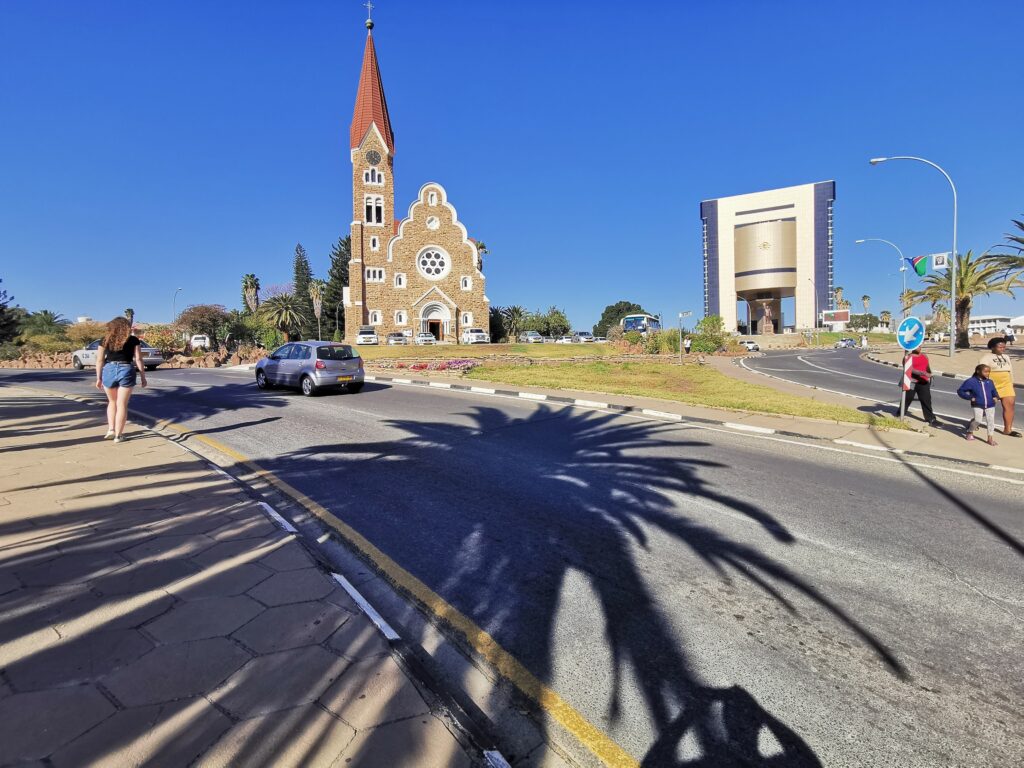
Before anything, I had to go find a place to eat and to get some local currency. I was directed to a large shopping complex where I could get everything I needed – from currency exchange to food.
At the Bureau de Change, I noticed there were lots of people who queued up to change money. Lots of them were from Angola and it was common to see people speaking Portuguese in this city. At the Bureau the Change which was also branded Casa de Cambio in Portuguese, most of the instructions on the forms and those written on the wall were all in English and Portuguese – this was because of the neighboring Angola which has a strong presence in Windhoek.
Angola and Namibia have very strong diplomatic ties when compared to their other neighbors. In fact, Namibia is the only country in among the different neighbors of Angola who does not require visa to enter Angola. Moving around in Windhoek will resurrect this idea. I have not been to Zambia which also shares a lot of closeness with Angola but I know visas are required for visits between the two country. This is partly because during the Angolan Civil War, Zambia supported the UNITA rebels who were fighting against the MPLA. The Angolan government retaliated by severing diplomatic ties with Zambia. Today, many Angolan nationals who and stuck in Zambia cannot go back to Angola due to this problem and both governments are working hard to resume diplomatic relations.
Now this I have enough local Namibian dollars on me, I went to get something to eat and toured the mall afterwards. During this tour, I even noticed things were cheaper compared to Botswana and Gobabis.
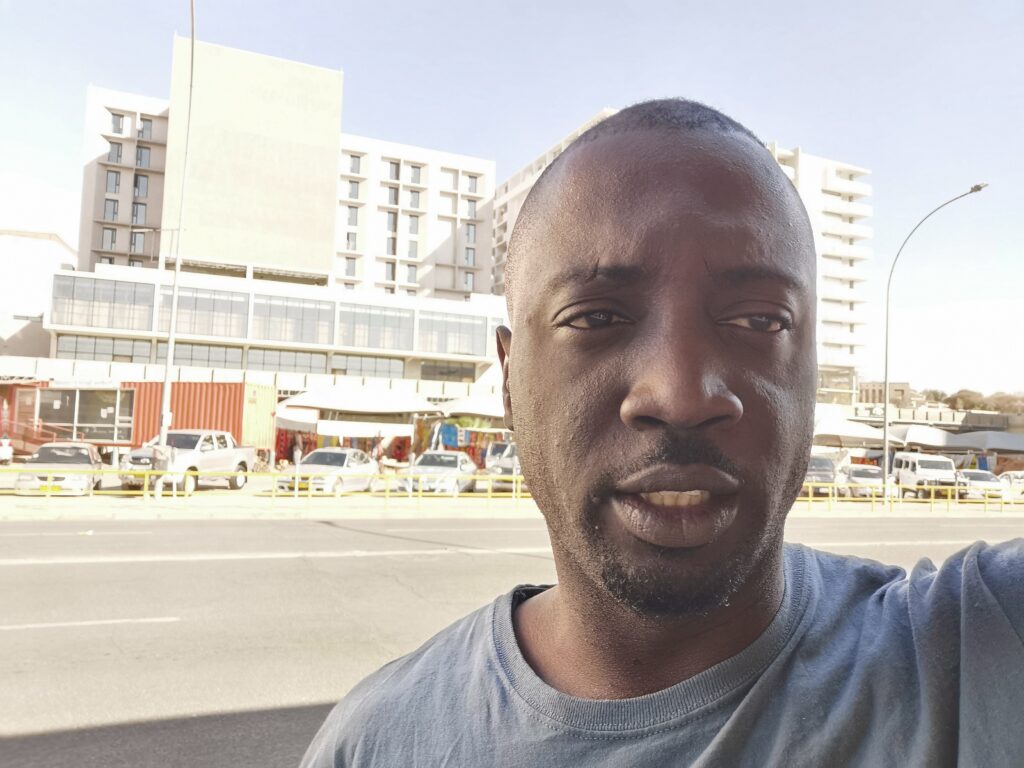
Leaving the Mall, I headed to the hostel reservation I had made earlier online before visiting – The Chameleon Backpackers & Guesthouse which was a walking distance from this Mall.
At the Chameleon Backpackers, it was exactly like a typical Hostel in Europe or anywhere else. Adventurers and travelers from different parts of the world were all there. Lots of checking ins and checking outs were happening concurrently. After my check in, I was assigned a space in a room that accommodates four people.
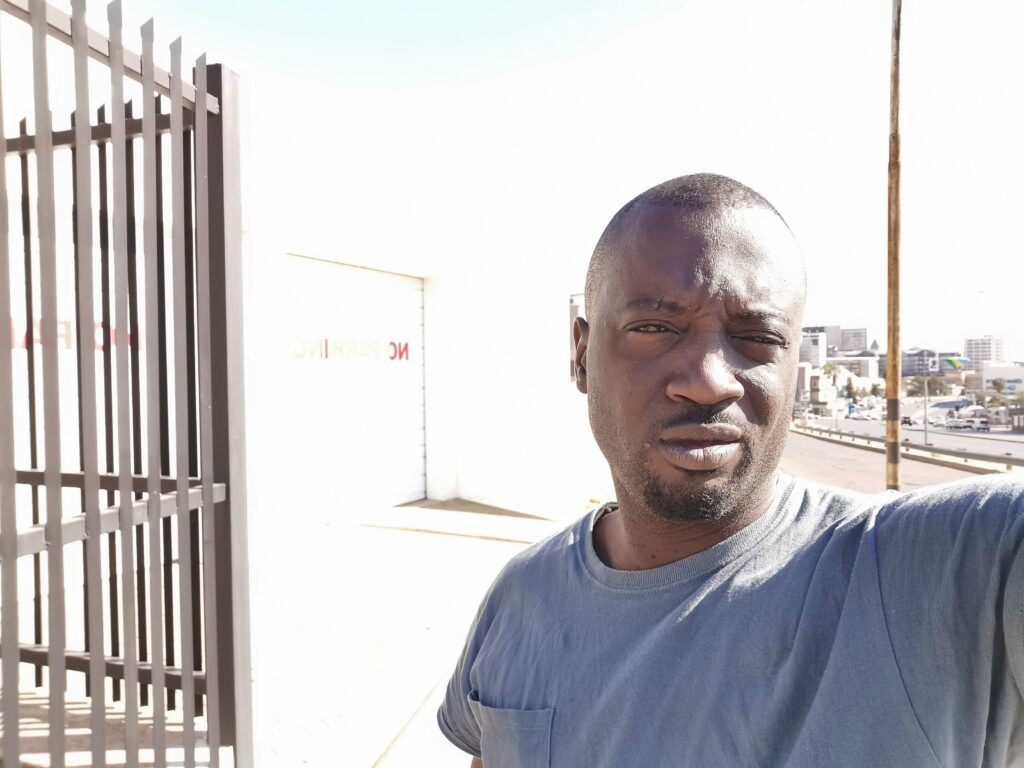
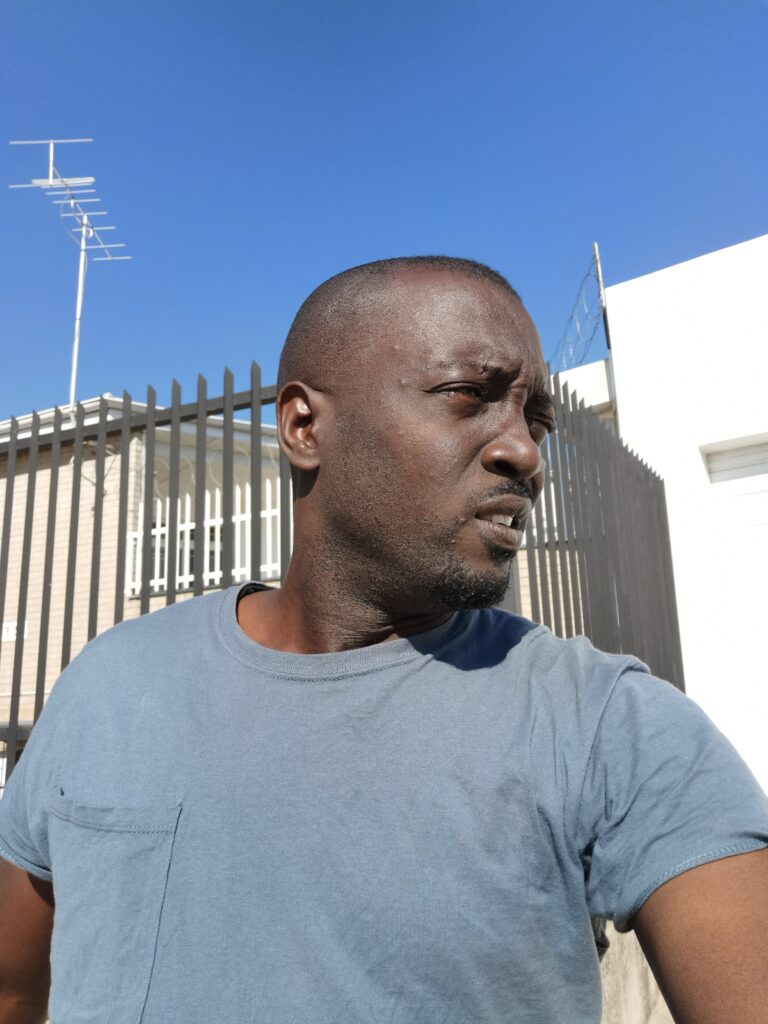
fbt
I took some time to relax and get some rest from the journey of the previous day. Afterwards, I decided it was time to go on a city tour. I only had less than 24 hours for this visit and I decided to make the best out of it. I headed straight to the Christ Church where tons of tourists where trooping in and out. The church was open as if to say there was going to be a church service ongoing but there was not.
From there, I visited the Independence Memorial Museum close by which had lots of information on the history and wars that happened in the pre-independent Namibia. Leaving the Museum, I walked to around the town before going back to get my night rest.
One of the things I noticed during this walk was how susceptible the place is to drought due to lack of rainfall. I saw a posted sign post of a ‘Farmers Information Center’ that invited them to learn how to cope with drought in the region.
Droughts occur when there is abnormally low rainfall for an extended period of time in a particular place. This means that a place would not be considered in drought unless it had less rainfall than normal, for a long period of time. Droughts can last from weeks to months and even years as the case may be.
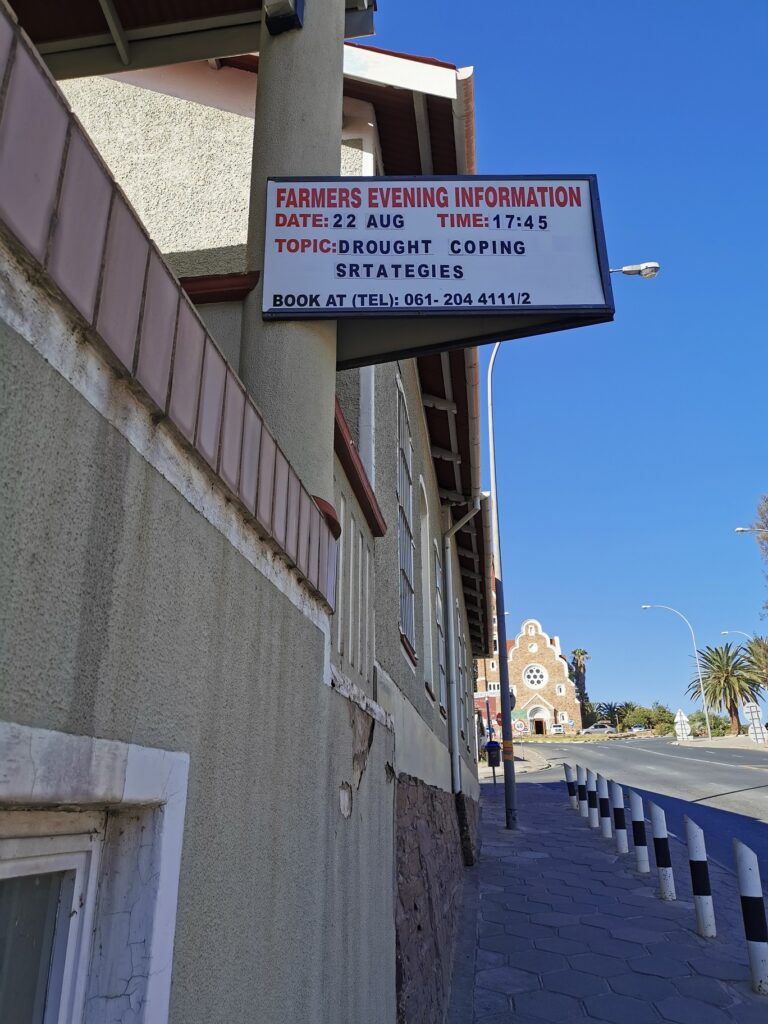
Even though I visited Namibia around August and rain was expected around October to December, the rain did not come on time and this resulted in a heavy drought thought out the entire Southern Africa region. The challenges of drought have resulted in the death of animals and wildlife, low revenue for farmers, famine and even shortage in electricity of drinking water since the water bodies that provide this water reduce drastically in volume during drought.
The president of Namibia had also declared the drought a national disaster. During this disaster, the government, the people and farmers all take precautionary measures to ensure losses are minimized. Farmers involve in what is known as destocking to ensure that only a very few healthy and productive animals are retained while others are sold or killed. In the wild, some of the animals are killed so as to ensure there is enough food for all the species to survive – some species can go extinct if they do not have enough provisions of food to sustain them.
During this period also, the government ensures that they mobilize the entire affected regions to ensure that nonfunctional water boreholes are repaired and put in good shape to provide enough water for the people and livestock. In some extreme cases, water tanker services are introduced to ensure that water gets to the places where they are mostly needed.
Another important aspect the government takes into consideration is the fact that when things get back to normal, there will be the need to subsidize farm inputs and machinery for a complete comeback.
In some extreme cases, there are cases of flooding in these areas which is not good for growing of plants and rearing of livestock. This presents a different type of concern for both the government and the people. The people cannot grow their crops and the animals cannot graze during this period. In summary, what is needed is just sufficient rainfall and not just little or too much of it.
Droughts are caused by some natural phenomenon like El Niño and La Niña which has to do with the increasing or decreasing of the temperature of the Pacific Ocean around the equator. This disrupt storm patterns and would result in droughts in places like Australia, Indonesia and Southern Africa for El Niño and the La Niña would likewise create droughts in places in South America’s Patagonia.
Other causes may also include lack of vapor in the atmosphere which would translate to lower precipitation which also will translate to less water for the water bodies and agriculture.
Asides these natural causes of droughts, some manmade activities like irrigation (in most cases, when large amount of water is used) removes water from water bodies like lakes, rivers and other groundwater sources with is a precursor to drought. Construction of dams could also be a problem as the creation would translate to little or no water available in the atmosphere which would normally translate to drought around places where water supply has been cut off.
Deforestation is also one of the main cause of this problem. Removing trees which would hold back some soil water from evaporating would expose the soil dryness, erosion and desertification.
The impact of drought is too numerous and are better discussed than experienced. It causes the migration of a people from their ancestral homeland to other places. This actually is the least of the consequences but means a lot to me as an Igbo man.
Other impacts include the unavailability of clean water supply which would result to people drinking water unfit for human consumption and would eventually fall sick. There is also the case of death of livestock and low yield of crops during the period which results to famine.
Most places become very dry due to lack of moisture and thus it is very easy for wildfires to start in these places.
The ongoing conflict between Egypt and Ethiopia on Ethiopia’s construction of the Grand Ethiopia Renaissance Dam on the River Nile is another case of foreseeing a futuristic drought and doing whatever it takes to ensure that the source of livelihood of a people is preserved. Experts believes that the construction of this dam would produce electricity for Ethiopia but would amount to loss of water for irrigation, aquatic life and so on for Egypt. It is also envisaged this would cause drought on the long run for Egypt who depend on the Nile for 95 percent of its freshwater supply. In this case also, the wildlife in the area would die or migrate to other places.
To survive during drought, a good government should ensure a good understanding of this phenomenon and its effects especially to farmers and others stakeholders. Here in Namibia for instance, I ran into this advert calling on farmers to visit for ideas on how they could survive the drought.
Culturally, in the ancient times, many farmers depend on fortune telling and other traditional means to predict when drought would likely happen and farmers in turn will take precaution to ensure that their losses are minimized.
Several traditional ritual practices have been adopted by people in this region to pray and request on the deity to send rains to them. In Botswana for instance, the Hosana Dance is a ritual dance used by the people to request the deity to send them rain and healing.
Nowadays, the meteorologists and other approved agencies observe patterns and warn farmers on what to expect.
When advised, the farmers are meant to undergo several activities which includes destocking their flock by selling some or killing some for food. Some who are involved in cropping are also advised to grow drought resistant species in order to withstand the disaster when it eventually arrives. They are also encouraged to use precision irrigation which ensures that water is not wasted but supplied to the particular crop that needs it.
I was very emotional for the rest of the trip because of the challenge of drought in this part of Africa – but I also admireded the doggedness of the African man who has lived here through several centuries and has survived droughts and several other disasters.
Getting home that evening, I returned to my hostel and started my preparations for my exit out of Namibia back to Gaborone for an African Union Expo on Education.

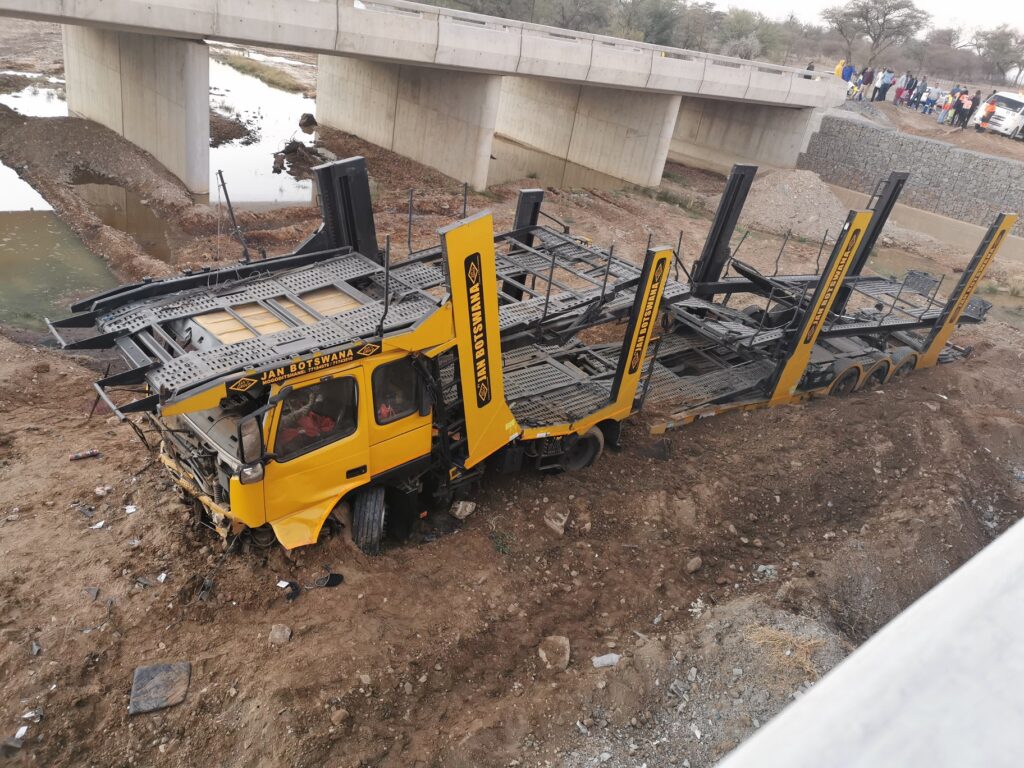
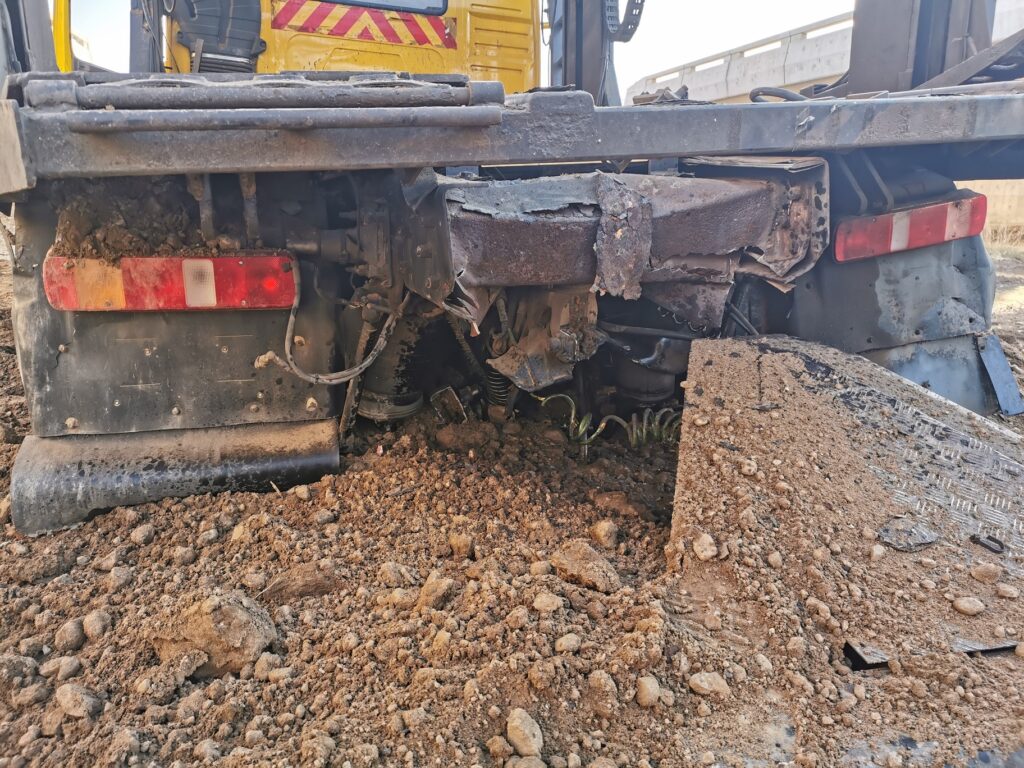
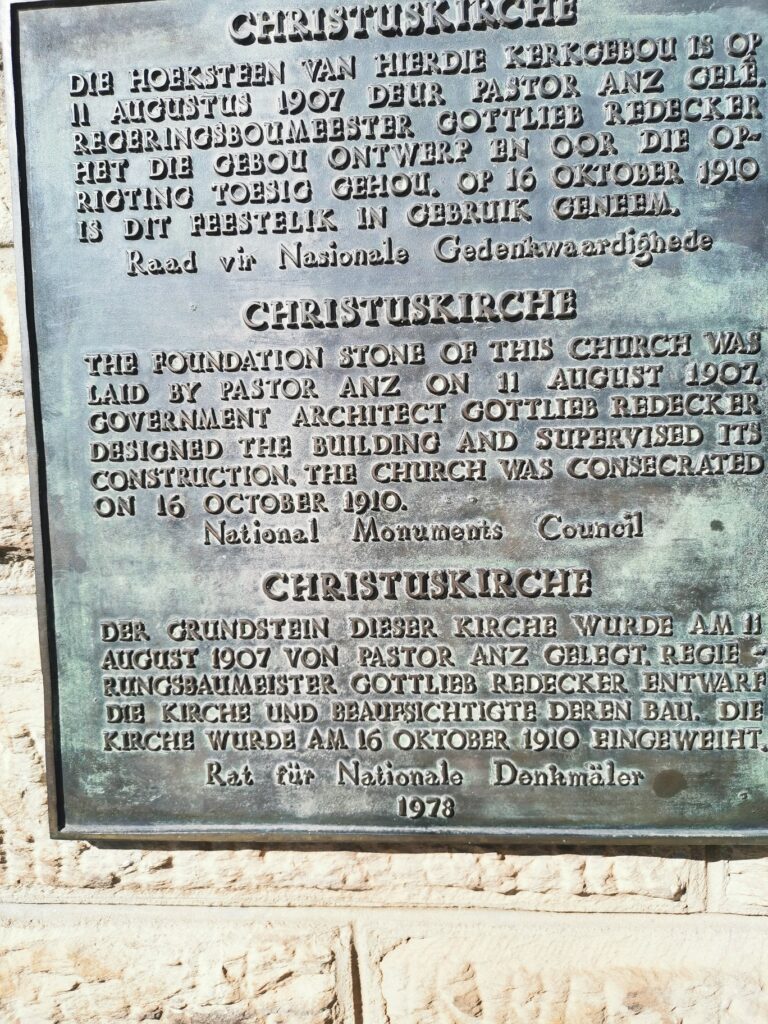
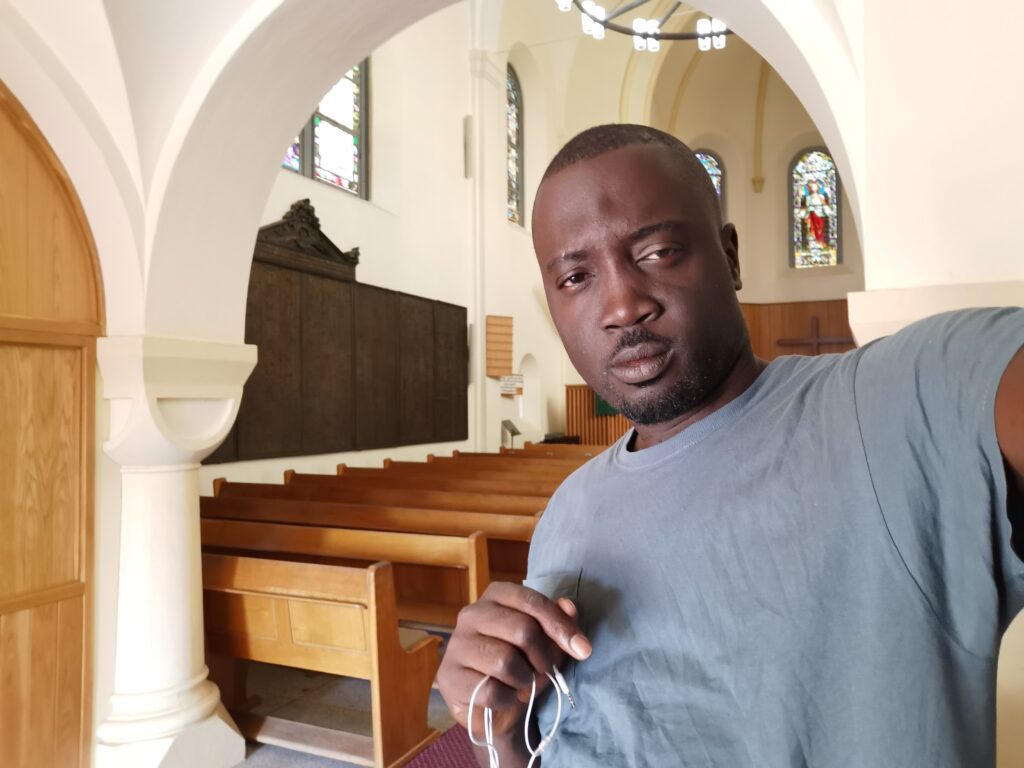
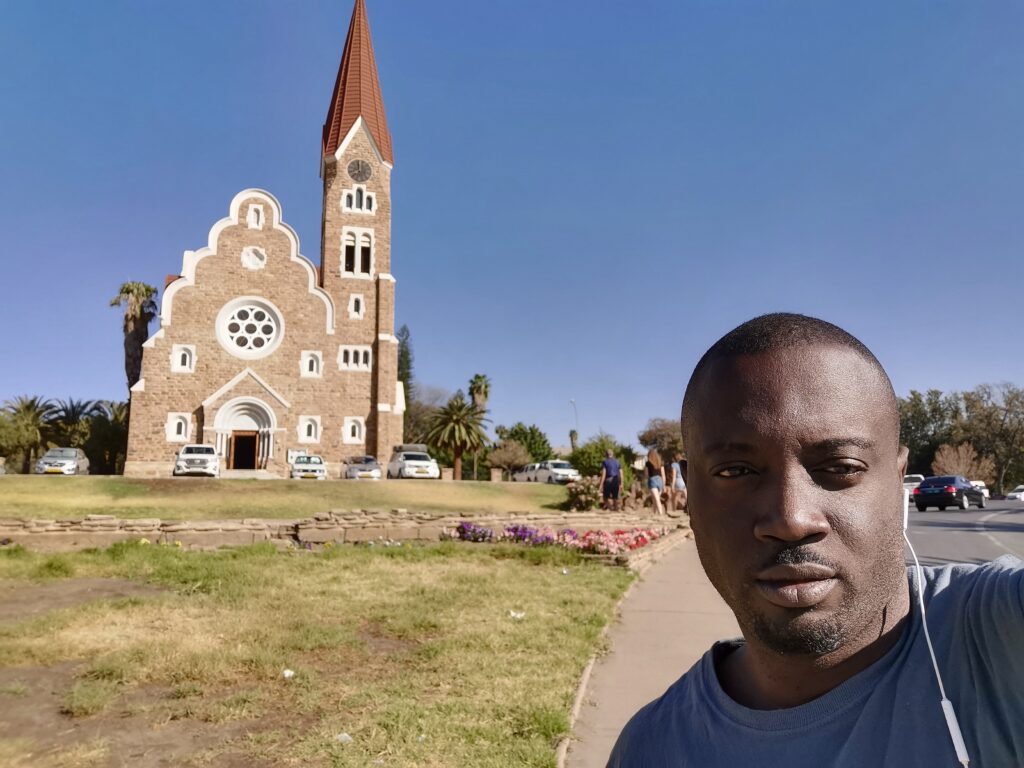
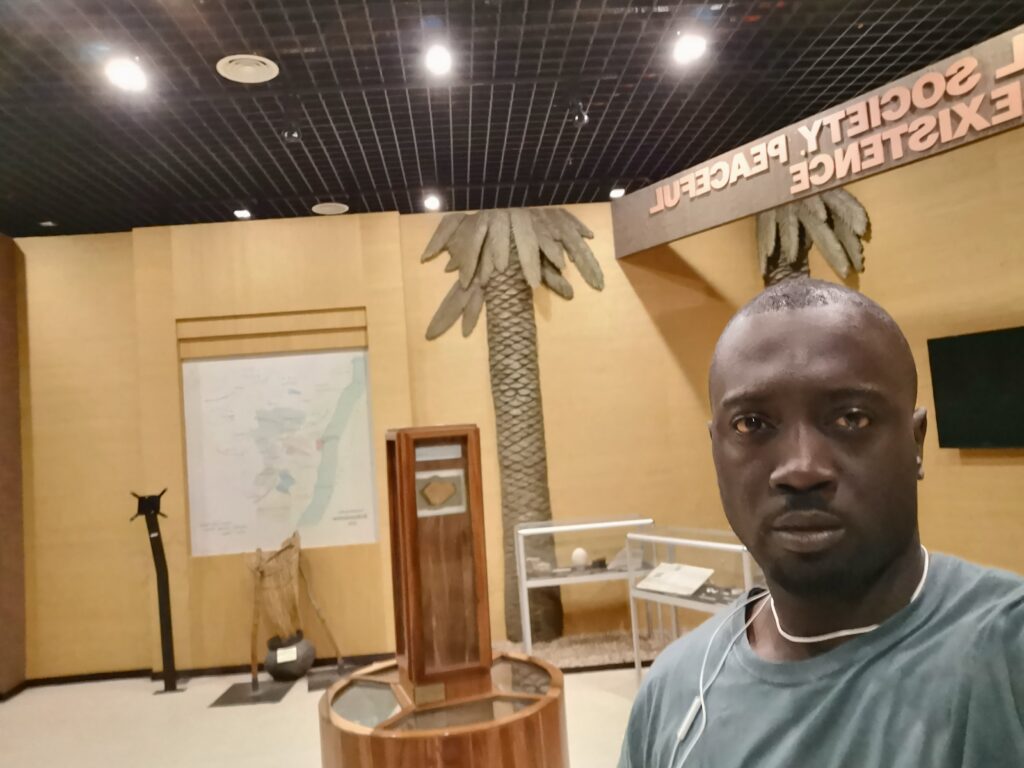
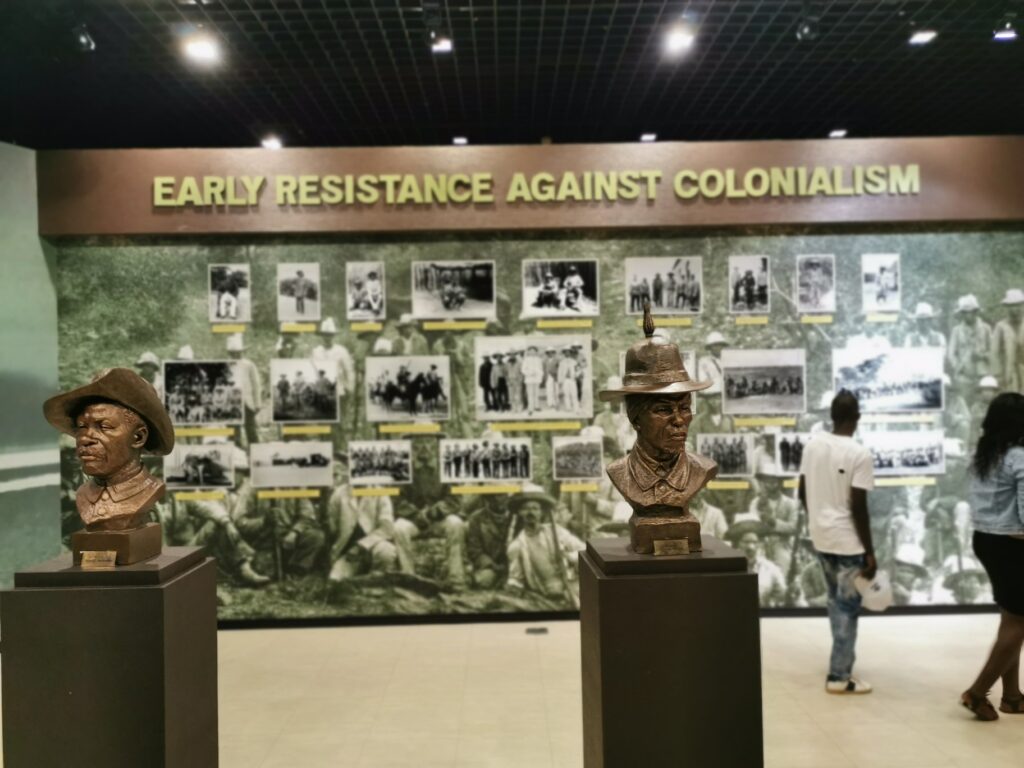
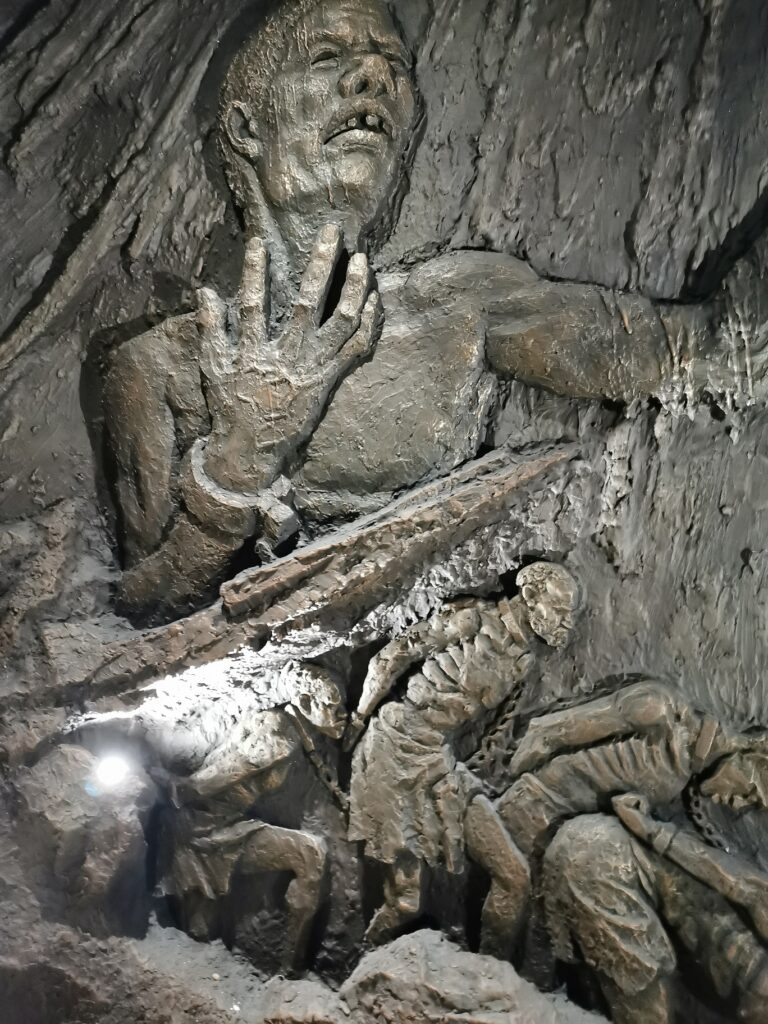
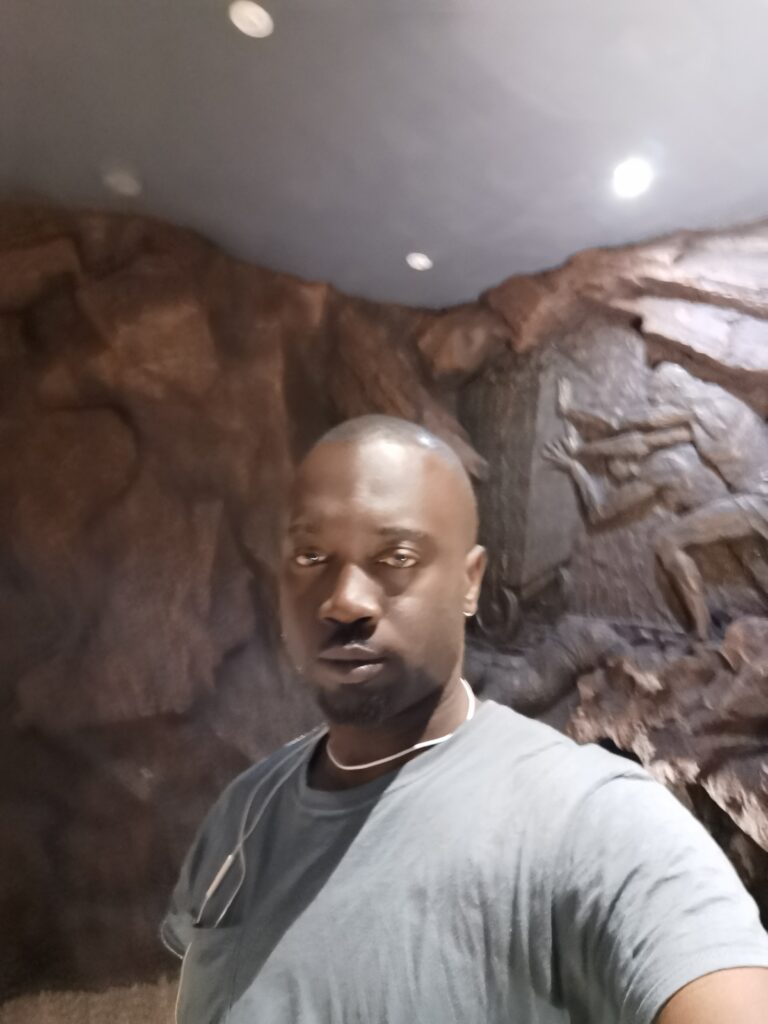
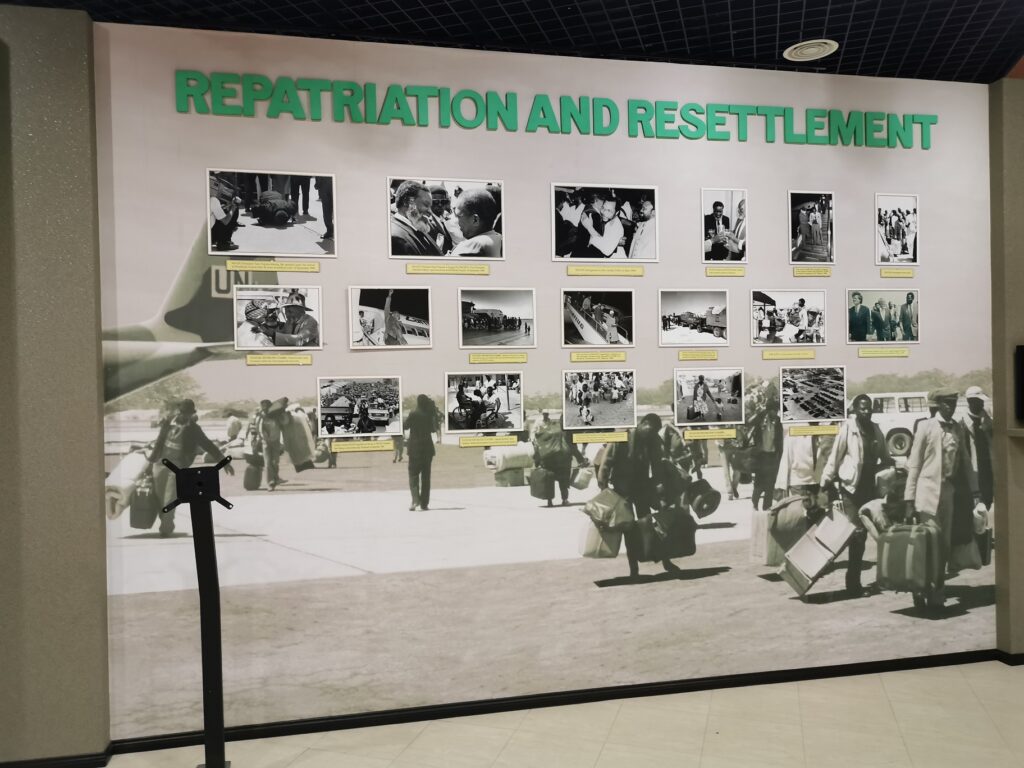
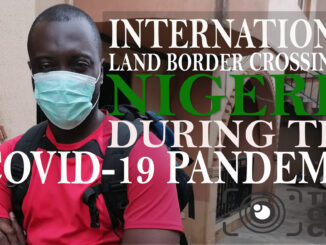
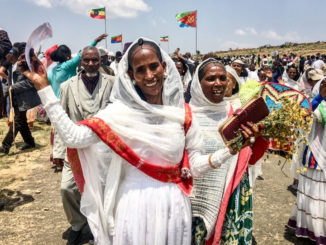
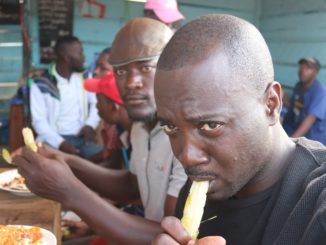
Be the first to comment